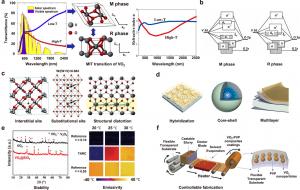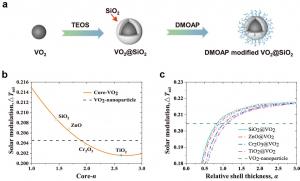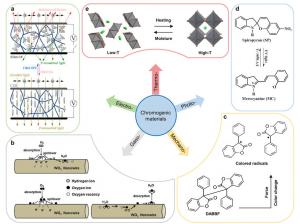GA, UNITED STATES, September 30, 2024 /EINPresswire.com/ — Vanadium dioxide (VO2)-based thermochromic coatings can dynamically modulate the heat gain and loss through windows, thereby mitigating energy consumption. The reversible metal-to-insulator transition renders VO2 an optimal candidate for smart window applications. Techniques such as elemental doping, nano-engineering, and integration of VO2 with other chromogenic materials effectively adjust the metal-to-insulator transition temperature. These advancements augment the breadth of smart window technology, with a primary focus on bolstering energy efficiency and sustainability.
The increasing energy consumption and carbon emissions are worsening global warming, making energy conservation crucial. Residential buildings account for 30-40% of the global energy use, highlighting the need to enhance their energy efficiency. Windows, often regarded as less energy-efficient components, are key targets for improvement. Smart windows can selectively transmit, reflect, and absorb solar radiation based on their adjustable spectral characteristics during hot and cold seasons, helping to balance a building’s thermal comfort and lighting. Thus, an extensive amount of the building energy consumption can be saved with an improved living environment. Briefly, a smart window should have a high visible-light transmittance, essential for lighting, and an adjustable transmittance in the ultraviolet and near-infrared bands, optimizing heat gain through the window. In addition to these general requirements, a thermochromic smart window can adjust infrared emissivity according to the ambient temperature so as to adjust the radiative cooling power in different seasons, making them critical for next-generation energy-efficient buildings.
In a new review article published in Light: Science & Applications, the team led by Professor Dangyuan Lei from the Department of Materials Science and Engineering, Centre for Functional Photonics, and the Hong Kong Branch of National Precious Metals Material Engineering Research Centre, City University of Hong Kong, have delved into recent advancements in phase-change VO2-based thermochromic smart windows. Their review covers the macroscopic crystal properties, microscopic structural innovations, and elemental doping of VO2 as well as relevant fabrication techniques. Additionally, they discussed alternative chromogenic materials to complement or overcome the limitations of VO2 in solar energy modulation. This review categorizes doping strategies for controlling the VO2 phase transition temperature, analyzes the solar modulation capability of inversed VO2-core-shell structures, and makes emphasis on practical engineering approaches, offering new insights into the development of energy-efficient VO2-based smart windows:
“We delve into recent advancements in the phase-change VO2-based thermochromic coatings for smart window applications, spanning from the macroscopic crystal level to the microscopic structural level (including elemental doping and micro/nano-engineering), as well as advances in controllable fabrication.”
“Though core-shell nano-engineering has emerged as an effective strategy for enhancing the thermochromic properties of VO2-based nanoparticle films, the scarcity of investigations into the optical characteristics of inverted core-shell structures, where VO2 serves as the shell material, underscores a critical gap in our current understanding. To address this gap, we have conducted a novel study of inversed core-shell structures. We investigated the enhanced solar modulation potential of these structures, offering a fresh perspective that provides useful guidelines for significantly enhancing VO2-based core-shell micro/nanostructures.” they added.
“Our review includes a summary of various dopants in VO2, categorized by interstitial site, substitution site, and structural deformation. It allows for a more intuitive understanding of the mechanisms and factors influencing the doping process, which is crucial for future research and applications.” they forecasted.
DOI
10.1038/s41377-024-01560-9
Original Source URL
https://doi.org/10.1038/s41377-024-01560-9
Funding information
This work was support by the City University of Hong Kong through an ARG project (9667246), the Innovation and Technology Commission of Hong Kong through a Mainland-Hong Kong Joint Funding Scheme grant (MHP/162/22), and the Research Grants Council of Hong Kong through a Collaborative Research Project Grant (C5051-22GF).
Lucy Wang
BioDesign Research
email us here
Legal Disclaimer:
EIN Presswire provides this news content “as is” without warranty of any kind. We do not accept any responsibility or liability for the accuracy, content, images, videos, licenses, completeness, legality, or reliability of the information contained in this article. If you have any complaints or copyright issues related to this article, kindly contact the author above.
![]()























